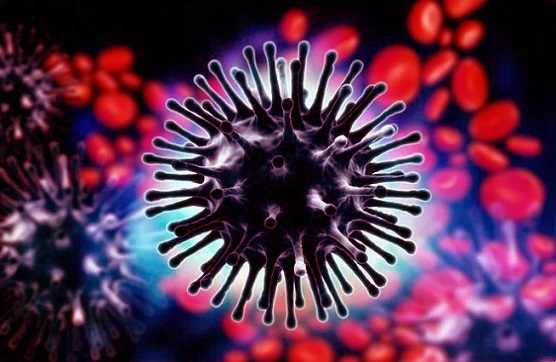Nikhil Prasad Fact checked by:Thailand Medical News Team Sep 09, 2025 3 months, 3 weeks, 6 days, 21 hours, 46 minutes ago
Medical News: A New Threat from an Old Virus
Researchers in China are raising alarm over the resurgence of a more virulent and dangerous form of the H1N1 influenza virus that once caused a global pandemic. A new study carried out in Anhui Province has shown that the strain known as H1N1pdm09 has reappeared after years of low activity and is evolving in ways that could make it harder to control. This
Medical News report highlights how scientists have discovered genetic mutations in the virus that allow it to spread faster, hit harder, and potentially evade existing immunity.
 Chinese Researchers Warn of Dangerous H1N1pdm09 Sub-lineage Reemerging
Chinese Researchers Warn of Dangerous H1N1pdm09 Sub-lineage Reemerging
The research was conducted by teams from the Anhui Provincial Center for Disease Control and Prevention, Tangshan Center for Disease Control and Prevention, School of Public Health at Anhui Medical University, Anhui Provincial Academy of Preventive Medicine, Anhui Academy of Medical Sciences, and the Inflammation and Immune Mediated Diseases Laboratory of Anhui Province.
Intense Outbreak in 2022 and 2023
During the 2022–2023 flu season, doctors noticed that cases of influenza-like illness in Anhui Province rose sharply, reaching 6.82 percent of outpatient visits, the highest in recent years. Laboratory tests confirmed that almost a third of samples were positive for H1N1pdm09. What was more troubling was the speed of the outbreak. Researchers calculated that the weekly percent change of infections shot up by over 376 percent, much higher than in earlier outbreaks. This indicated that the virus was not only back but spreading far more aggressively than before.
Genetic Changes Driving Danger
By sequencing 103 virus samples collected between 2017 and 2023, the scientists found that most of the newer strains belonged to a subgroup called clade 6B.1A.5a.2a. These strains carried several mutations in the hemagglutinin (HA) gene, a protein on the surface of the virus that helps it enter human cells. Mutations at key spots, such as N156K, L161I, A186T, and Q189E, were especially concerning. These changes may help the virus bypass existing immunity and vaccines. Some mutations were entirely new and had never been seen in this type of flu before, suggesting the virus is still adapting in dangerous ways.
Waning Protection and Weak Cross Immunity
One of the most alarming findings is that people who were exposed to earlier strains of H1N1pdm09 had much weaker protection against the new version. For example, antibodies from individuals infected during the 2017–2018 flu season were estimated to protect less than 26 percent against the new strains. Even those exposed in 2018–2019 only retained about 35 percent protection. This explains why the outbreak in 2022–2023 spread so quickly—large parts of the population were essentially vulnerable again despite previous exposure.
Implications for Vaccines and Public Health
The study also warned that current vaccines may not offer enough protect
ion. While vaccines remain the best defense, their effectiveness drops when the virus mutates too far from the strains they were designed against. The scientists recommend that health authorities strengthen surveillance systems, regularly sequence local virus samples, and update vaccines as quickly as possible when new genetic changes are detected. They also suggest adopting flexible prevention strategies that combine vaccines with measures like masks and temporary restrictions if needed.
A Growing Concern
The resurgence of this H1N1 sublineage is a stark reminder that influenza remains a global threat even after the world’s focus on COVID-19. The virus’s ability to mutate and reappear after years of low activity makes it unpredictable. If left unchecked, the new strain could cause widespread illness and strain healthcare systems. Experts stress that early warning systems, constant monitoring, and swift vaccine updates are critical to staying ahead of the virus. The lessons from the pandemic years must not be forgotten as new threats emerge from old viruses.
The study findings were published in the peer reviewed journal Microbiology Spectrum.
https://journals.asm.org/doi/10.1128/spectrum.02218-24
For the latest on influenza or H5N1, keep on logging to Thailand
Medical News.
Read Also:
https://www.thailandmedical.news/news/phytochemical-found-in-licorice-shows-strong-potential-against-flu-viruses
https://www.thailandmedical.news/news/phytochemical-from-root-of-astragalus-plant-reduces-risk-of-lung-damage-caused-by-influenza-virus
https://www.thailandmedical.news/news/erdosteine-emerges-as-a-potent-weapon-against-deadly-respiratory-viruses-including-sars-cov-2-rsv-and-influenza-a
